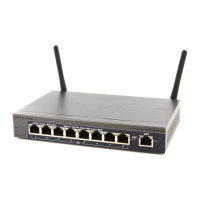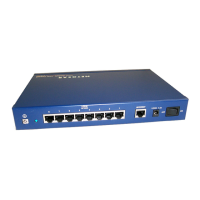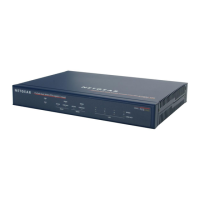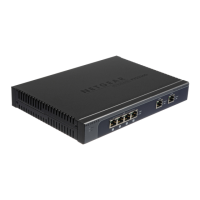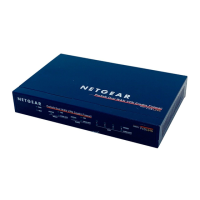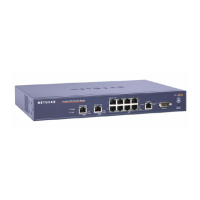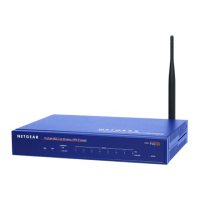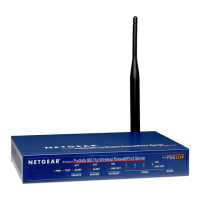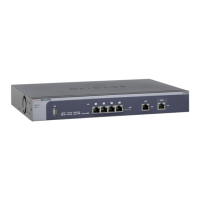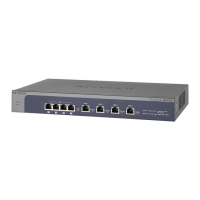Introduction
11
NETGEAR ProSAFE VPN Firewall FVS318G v2
The VPN firewall incorporates Auto Uplink
TM
technology. Each Ethernet port automatically
senses whether the Ethernet cable plugged into the port should use a normal connection
such as to a computer or an uplink connection such as to a switch or hub. That port then
configures itself correctly. This feature eliminates the need for you to think about crossover
cables, as Auto Uplink accommodates either type of cable to make the right connection.
Extensive Protocol Support
The VPN firewall supports the Transmission Control Protocol/Internet Protocol (TCP/IP) and
Routing Information Protocol (RIP). The VPN firewall provides the following protocol support:
• I
P address sharing by NAT. The VPN firewall
allows many networked computers to
share an Internet account using only a single IP address, which might be statically or
dynamically assigned by your Internet service provider (ISP). This technique, known as
Network Address Translation (NAT), allows the use of an inexpensive single-user ISP
account.
• Automatic configuration of attached computers by DHCP. T
he VPN firewall
dynamically assigns network configuration information, including IP, gateway, and
Domain Name Se
rver (DNS) addresses, to attached computers on the LAN using the
Dynamic Host Configuration Protocol (DHCP). This feature greatly simplifies
configuration of computers on your local network.
• DNS proxy. When DHCP is enabled and no DNS addresses are specified, the firewa
ll
provides its own address as a DNS server to the attached computers. The firewall obtains
actual DNS addresses from the ISP during connection setup and forwards DNS requests
from the LAN.
• PPP over Ethernet (PPPoE
). PPPoE is a protocol for connecting remote hosts to the
Internet over a DSL connection by simulating a dial-up connection.
• Quality of Service (QoS). Th
e VPN firewall supports QoS.
• Layer 2 Tunneling Protocol (L2TP). A tunn
eling protocol that is used to support virtual
private networks (VPNs).
Easy Installation and Management
You can install, configure, and operate the VPN firewall within minutes after connecting it to
the network. The following features simplify installation and management tasks:
• Browser-based manag
ement. Browser-based configuration allows you to easily
configure the VPN firewall from almost any type of operating system, such as Windows,
Macintosh, or Linux. Online help documentation is built into the browser-based web
management interface.
• Auto-detection of ISP.
The VPN firewall automatically senses the type of Internet
connection, asking you only for the information required for your type of ISP account.
• IPSec VPN Wizard.
The VPN firewall includes the NETGEAR IPSec VPN Wizard so that
you can easily configure IPSec VPN tunnels according to the recommendations of the
Virtual Private Network Consortium (VPNC). This ensures that the IPSec VPN tunnels
are interoperable with other VPNC-compliant VPN routers and clients.
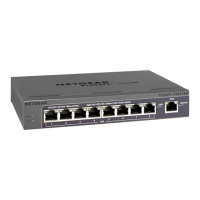
